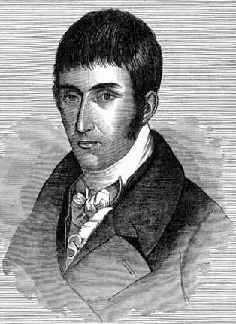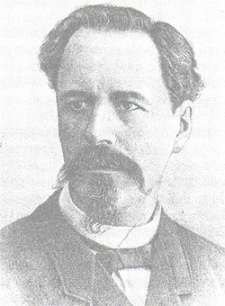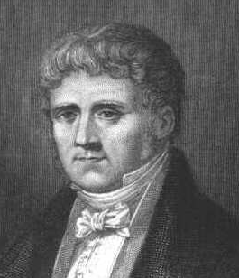Plagiarism in Historical Texts
Plagiarism has a long and complicated history. While the study of its evolution through the legal system is a field on its own, studying the appearance of plagiarism in historical texts can reveal the complicated, interconnected fabric of the early modern world, that is, transnational and transatlantic communication (books, newspapers, journals, letters, etc.), the loose idea of authorship and translation, the cosmopolitan figure, language and education, problematic international law (or lack thereof), etc. This module demonstrates how plagiarism can produce discussions on the larger world economy, law, literature, and culture.
Some interesting examples of historical plagiarism occur in Las mujeres españolas, portuguesas y americanas (Spanish, Portuguese, and American Women) and Historia moral de las mujeres (The Moral History of Women), documents found on the Our Americas Archive Partnership (OAAP) website (a collaborative digital archive focused on the Americas). Both books were published in the 19th century and provide a description of women in the Americas.
Las mujeres specifically focuses on, as its subtitle clearly outlines, the “character, customs, typical dress, manners, religion, beauty, defects, preoccupations, and qualities of women from each of the provinces of Spain, Portugal, and the Spanish Americas.” It contains 20 chapters, written by different authors, each dedicated to a different country or region. The plagiarism in question occurs in the chapter titled “The Woman from Ecuador,” by Nicolas Ampuero (pp. 164-167). This plagiarism is particularly interesting, since it is not a simple case of borrowed text. Rather, it is complicated by language and translation.
Ampuero not only copied, but also translated a passage in Gaspard-Théodore Mollien’s Voyage dans la République de Colombia, en 1823 (“Voyage in the Republic of Colombia in 1823”) from French to Spanish. This passage, however, was Mollien’s summary of Francisco José de Caldas’s travels, recorded in Caldas’ own travel narrative, “Viaje de Quito a Popayan” (“Voyage from Quito to Popayan.”), which he originally wrote in Spanish. The text, therefore, goes from Spanish (Caldas), to French (Mollien), to Spanish (Ampuero), begging the question: was Ampuero aware of Caldas’ Spanish work? An examination of Mollien’s book shows that Ampuero must have assumed the existence of another text, since Mollien specifically refers to Caldas’ travel narrative and even includes his name in the summary. Here we can see an almost exact wording, minus Caldas’ name:
MOLLIEN: “After having passed Alto de la Virgen, Caldas entered Delek ”[] (Travels 446).
AMPUERO: “Once traversing the Alto de la Virgen, you enter Dalek”[] (Spanish, Portuguese, and American Women 166).
Also of interest is the fact that the plagiarized text does not describe the women of Ecuador, but rather focuses on a route through the country.
Historia moral, written by Francisco Nacente, details the role of women in society (both civilized and uncivilized) in two volumes. Prominent examples of plagiarism include the sections titled “The Toltec” (p. 433), “The Tale of Xochitl” (pp. 433-435), and “The Peruvian Indians” (pp. 437-439).
“The Toltec” and “The Tale of Xochitl” include text plagiarized from Antonio García Cubas’ Escritos diversos de 1870 a 1874 (“Diverse writings from 1870 to 1874”). In these sections, the reader will note that Nacente omitted some of García Cubas' sentences and added a few of his own; yet, he maintains a word-for-word borrowing of the rest of the text.
“The Peruvian Indians,” was copied from Conrad Malte-Brun’s Précis de la géographie universelle ou description de toutes les parties du monde (“Universal Geography, Or a Description of All the Parts of the World.”). Once again, there is an instance of translation plagiarism, where Nacente translates Malte-Brun's original French and passes it off as his own. Although Nacente fails to cite Malte-Brun, he does include the latter’s own notes, which cite Inca Garcilaso de la Vega, Agustín Zarate, the Peruvian newspaper Mercurio peruviano (“Peruvian Mercury”), and Viajero universal (“Universal Traveler”).
The type or genre of literature plagiarized is important to note, since different genres have various implications on cultural significance. These particular instances of plagiarism, for example, can prompt discussions on the importance and circulation of the travel narrative and its ability to grant access to places and cultures unknown. The implication in this case being that, perhaps the authors did not or could not travel to the regions they sought to describe.
These examples also bring in to question the matter of plagiarism in translation. Some questions include:
What does this imply about education, culture, and the circulation of literary material?
Why would an author choose to plagiarize a foreign-language text over literature published in his or her own country?
How does plagiarism through translation compare to same-language plagiarism throughout history?
What types of laws existed to regulate plagiarism?
How did these laws function when dealing with foreign literature?
Literature, as well as the ideas contained in texts, did not remain confined to the national borders, rather it moved fluidly across borders and languages. In addition, author’s and publisher’s rights (which varied from country to country and evolved at different rates) would have changed depending on the country and time period. Studying plagiarism can, therefore, map global contact zones linking authors and readers across the globe and even through time, simultaneously answering the question: who was reading whom?, and asking: what belonged to whom?
For further reading, see:
Bjørnstad, Hall. Borrowed Feathers: Plagiarism and the Limits of Imitation in Early Modern Europe. Norway: Unipub, 2008.
Kewes, Paulina (Ed.) Plagiarism in Early Modern England. Houndmills: Palgrave MacMillan, 2003.
Parker, Philip M. (Ed.)Plagiarism: Webster's Timeline History 1583-2007. San Diego, CA: ICON Group International, Inc., 2009.
Pabón Núñez, Lucio. Del plagio y de las influencias literarias, y otras tentativas de ensayo. Bogotá: Imprenta Nacional, 1965.
Randall, Marilyn. Pragmatic Plagiarism: Authorship, Profit, and Power. Toronto: University of Toronto Press, 2001.
Sánchez de la Cuesta, Gabriel. Impugnación y defensa del plagio. Discurso de recepción en la Real Academia Sevillana de Buenas Letras. Sevilla, 1952.
Visit El Plagio Literario's Bibliografía page for a more extensive list of bibliographic resources (in a variety of languages):
http://www.elplagio.com/Plagio/ENTRADA.htm
Conrad Malte-Brun, Précis de la géographie universelle ou description de toutes les parties du monde. Vol. 5, 2nd edition. Paris: Chez Volland le Jeune, Libratre, 1821. pp. 593-603.
Caldas, Francisco José de. “Viaje de Quito a Popayan” in Obras completas de Francisco José de Caldas. Bogota: Universidad de Colombia, 1966.
García Cubas, Antonio. Escritos diversos de 1870 a 1874. Mexico: Imprenta de Ignacio Escalante, 1874, pp 349-356.
García Cubas, Antonio. The Republic of Mexico in 1876, trans. George F. Henderson. Mexico: La Enseñanza Printing Office, 1876, pp 47-51.
Mollien, Gaspard Théodore. Voyage Dans la République de Colombia, en 1823. Vol. 2 Paris : Chez Arthus Bertrand, Librare, 1824.
Mollien, Gaspard Théodore. Travels in the Republic of Colombia, in the years 1822 and 1823. Translation. London: C. Knight, Pall-Mall East, 1824.






